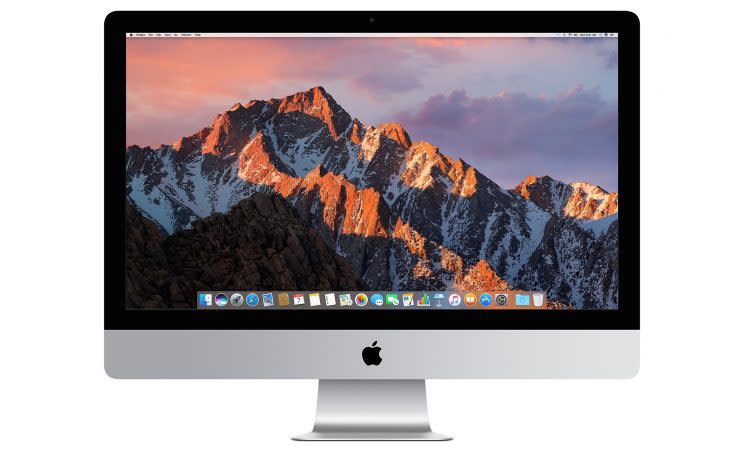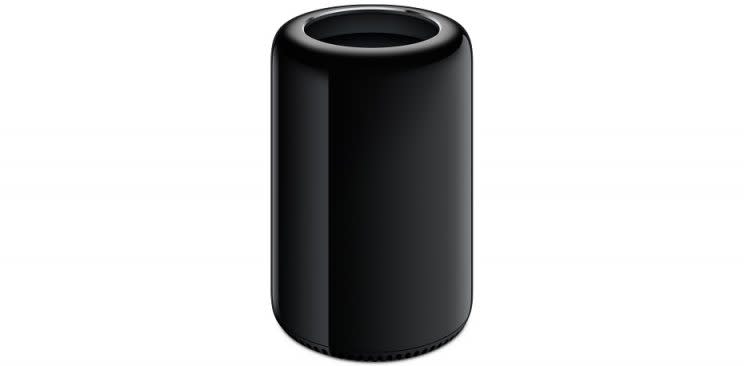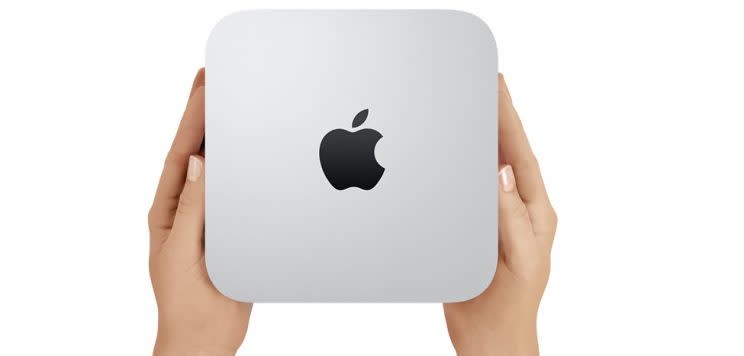Apple once again ignores a big market

Things looked pretty grim for desktop computers at my local Apple (APPL) Store on Monday afternoon. Of 12 tables set up to show off Apple’s hardware, only one — socked away in the back left corner — was home to desktops.
The 21” and 27” iMacs on display were at least relatively new, having received a minor refresh last October. But the Mac mini and Mac Pro models next to them — each plugged into one of the Thunderbolt displays Apple discontinued in June — were last updated in October 2014 and December 2013.
Now that Apple has rolled out a line of new laptops while once again leaving its desktop hardware idle, that store display will look just a bit gloomier next Monday. And for many Mondays thereafter.
Things didn’t used to work this way
Not long ago, Apple (AAPL) updated all of its desktops at least as often as it now updates the iPhone. Each year’s new models wouldn’t always bring huge changes, but going three years between upgrades usually ensured you’d get a good value for your money.
Apple letting the Mac mini gather dust should have been the first warning. That affordably priced computer helped demolish the “Macs cost too much” storyline, but Apple started letting it go two years or more between updates.
And then Apple introduced a brand-new professional-grade desktop, the Mac Pro, and seems to have forgotten that it existed too — it hasn’t seen a single update since the late 2013 introduction of the computer’s current cylindrical design.

The all-in-one iMac hasn’t seen as much neglect, but its underlying design hasn’t changed much aside from the removal of an optical drive. (Which I didn’t agree with; CDs and DVDs are still a thing, and who cares how thin a desktop computer is? If you’re looking at it from the side, you’re using it wrong.)
Note that the aging nature of these Mac desktops has yet to be offset with an appropriate discount.
Missed opportunities
The cost of going a year or two or three without an update starts with keeping users stuck on a slower processor.
You might not notice or mind it at home, and that’s fair; as Adam Engst, editor of the long-running Mac news site TidBits, observed, “for most people, most of the time, CPU power is not a limiting factor.”
But creative types who wrestle with pixels for a living — and pay high-end prices for the necessary hardware — certainly will.
“Windows is pretty far ahead on all sorts of processor intensive activities that Apple used to do well in,” said Stephen Baker, vice president of industry analysis at NPD Group. He noted the powerful, stylish and expensive desktop Microsoft (MSFT) introduced Wednesday: “Surface Studio is going to hurt Apple a lot in those professional categories.”

“A faster Mac Pro would dramatically improve editing of ultra high resolution footage (4K and higher) and it would also decrease render times, ultimately saving us a lot of time,” noted Vinh Le, a video producer with the Washington marketing firm iStrategy Labs, in an email.
Old desktop designs also miss out on useful advances in how we interact with computers.
As today’s updated MacBook Pros show, computers no longer need to force us to unlock them with typed-in passwords when they include fingerprint sensors. That’s an upgrade you’d notice dozens of times a day.
The Touch Bar — the touchscreen strip atop the keyboard in Apple’s two new MacBook Pro laptops — might also make a good addition to a desktop. But you can’t get that yet.
So what?
At one level, you could argue that the desktop is irrelevant. That store positioning doesn’t just reflect any shame Apple might feel over its aging lineup. Desktops have been declining for years; by the fourth quarter of 2012, Mac laptops outsold Mac desktops by about three to one.
But if you want to maximize storage or expandability, a laptop will suit you poorly. The solid-state drives they use typically max out at 512 gigabytes, while desktops can easily accommodate two or four times as much and offer more expansion ports to connect external devices.
Most also let you add as a big of a screen as you want without first paying for a built-in display.

More important, computer vendors not based in Cupertino, Calif., still seem willing to chase that market.
One longtime analyst urged a little more patience in Apple.
“These products by Apple are always produced with a strategic goal in mind” — think major operating-system and application upgrades and new web services — said Tim Bajarin, president of Creative Strategies. “They also always want to push design to the edge and that also takes time.”
Engst, another Mac veteran, noted that switching still isn’t that easy. “I suspect that familiarity with Mac-specific tools and procedures would keep professionals on the Mac for a long time even if Windows PCs promised performance gains.”
This is something I, personally, need to think about, since I’m typing this on an ancient iMac I would like to replace if only it didn’t entail paying a 2016 price for a design rooted in 2014.
Bajarin suggested I shouldn’t have to wait much longer: “I believe there is a radical new design in the works and that is probably targeted for the spring.”
OK, Apple; I’ll hang on a little longer. Fine. Are you happy now?
More from Rob:
How hackers could use your smart home devices to launch web attacks
The White House gathered tech leaders to tackle society’s biggest problems
Here’s the cybersecurity debate Clinton and Trump should have had
How the government plans to make your self-driving car safer
Email Rob at [email protected]; follow him on Twitter at @robpegoraro.
